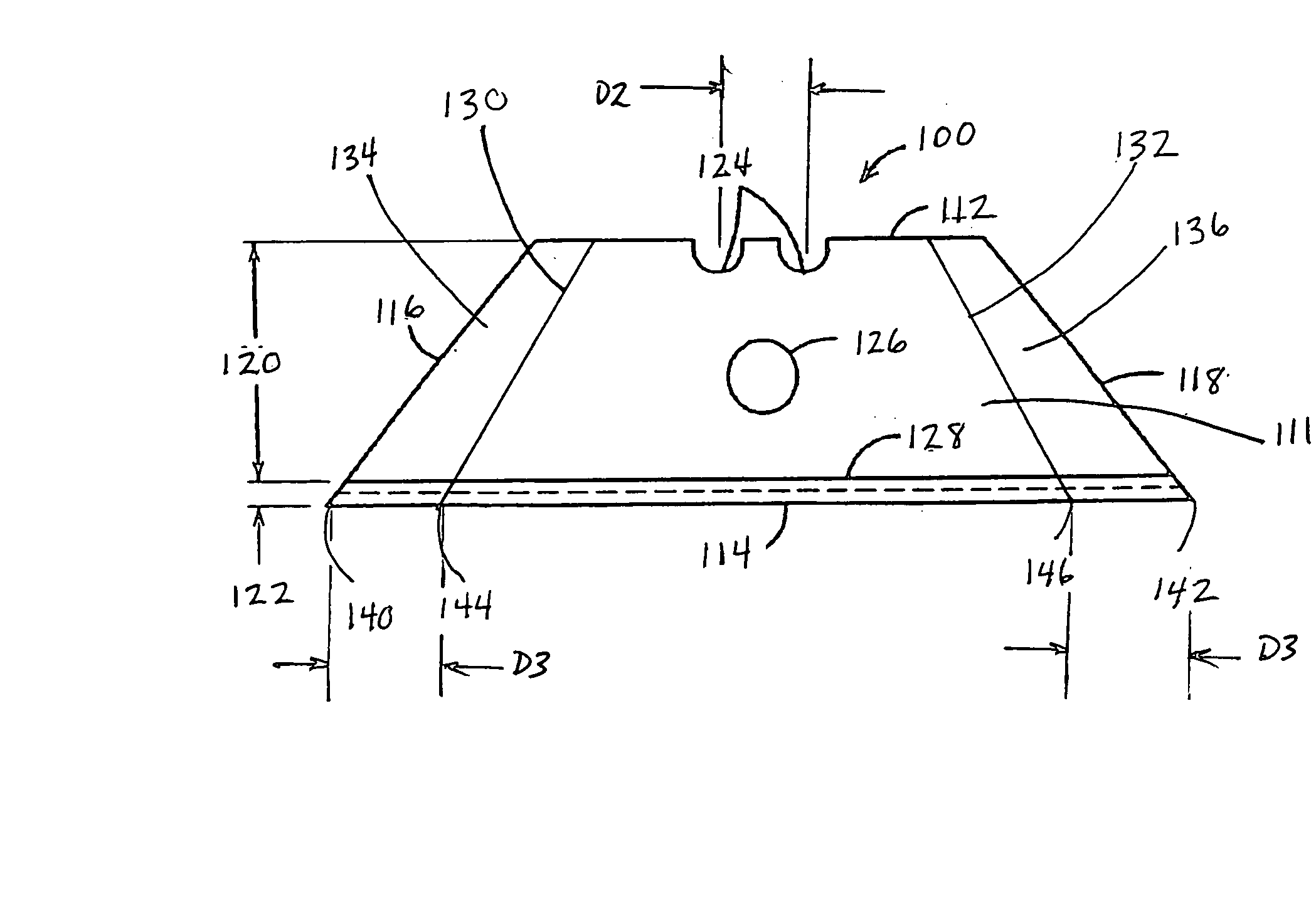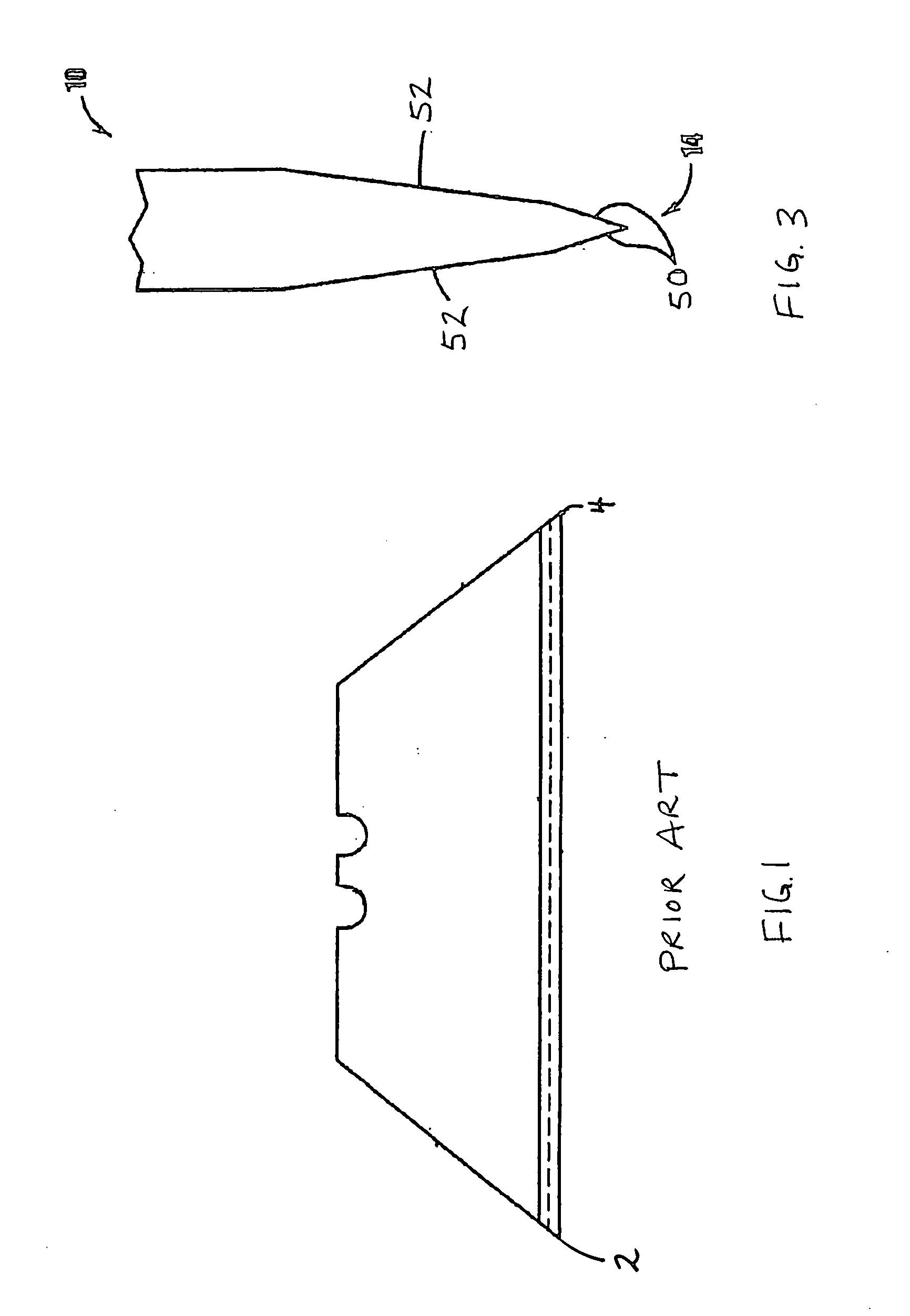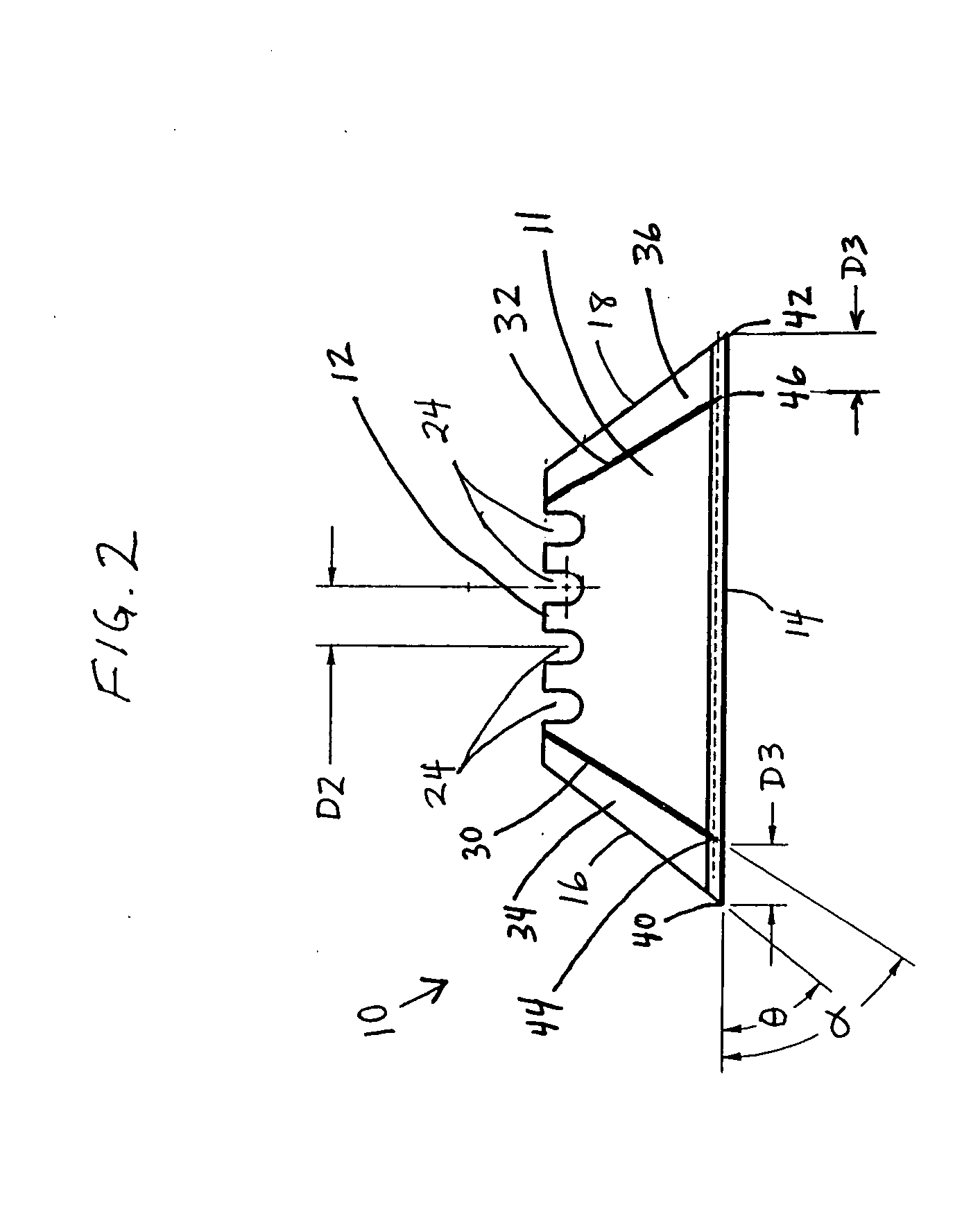Four point utility blade
a technology of utility blades and blades, applied in the field of utility blades, can solve the problems of wasting blades, reducing the service and reducing the use of individual blades, so as to maintain blade stability, feel and control during use, and prolong the life of individual blades
- Summary
- Abstract
- Description
- Claims
- Application Information
AI Technical Summary
Benefits of technology
Problems solved by technology
Method used
Image
Examples
Embodiment Construction
[0023] In FIGS. 2, 4 and 5, a four-point or snap trap utility knife blade herein described is indicated generally by the reference numeral 10. The blade is completely usable with conventional industry standard retractable and fixed blade utility knives that utilize conventional trapezoidal utility blades, but can also be used with additional utility knives and holders that are currently known or later become known. The utility knife blade 10 comprises a generally planar blade body 11 that defines a back edge 12, a cutting edge 14 located on an opposite side of the blade relative to the back edge, and two side edges 16, 18 located on opposite sides of the blade relative to each other and extending between the back and cutting edges of the blade 10. The intersection of each side edge 16,18 and the cutting edge 14 forms a pair of primary cutting points, first cutting point 40 and second cutting point 42 respectively, which are typically used for cutting and puncturing work pieces. In o...
PUM
 Login to View More
Login to View More Abstract
Description
Claims
Application Information
 Login to View More
Login to View More - R&D
- Intellectual Property
- Life Sciences
- Materials
- Tech Scout
- Unparalleled Data Quality
- Higher Quality Content
- 60% Fewer Hallucinations
Browse by: Latest US Patents, China's latest patents, Technical Efficacy Thesaurus, Application Domain, Technology Topic, Popular Technical Reports.
© 2025 PatSnap. All rights reserved.Legal|Privacy policy|Modern Slavery Act Transparency Statement|Sitemap|About US| Contact US: help@patsnap.com



